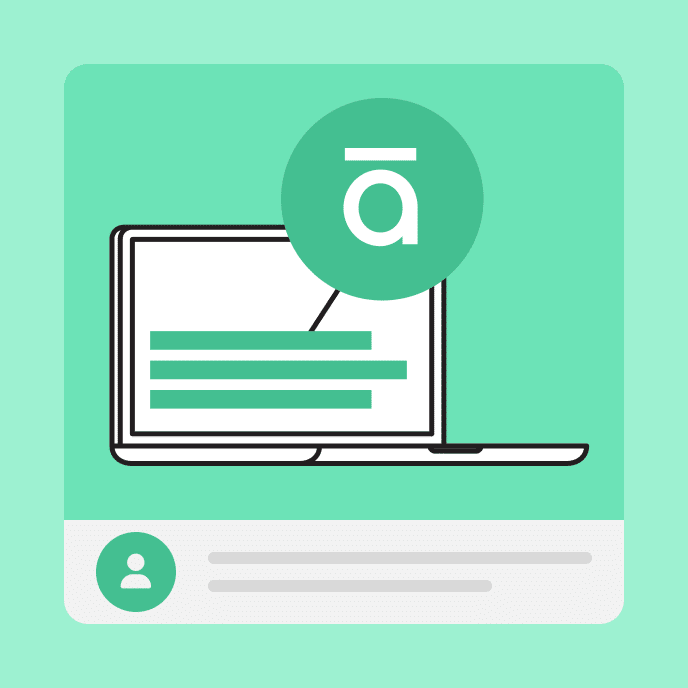8 Advantages of E-learning for Workplace Training
Discover the advantages of online employee training, including greater cost-effectiveness, speed, scalability, engagement, and more.

8 Advantages of E-learning for Workplace Training
Here’s a common workplace challenge: How do you train a global workforce—fast, effectively, and without breaking the bank?
The answer? E-learning.
Whether you’re a learning and development specialist looking to upskill your team or a decision-maker seeking cost-effective solutions, electronic learning—better known as e-learning—delivers major advantages. How? Discover eight benefits e-learning offers in this post.
Key Takeaways
8 E-learning advantages
For workplace learners and trainers alike, online courses are an ideal way to train the workforce. Let’s explore eight reasons to consider adding digital learning to your workplace training program.
1. E-learning is cost-effective.
Why do all 100 of the fortune 100 businesses use e-learning tools? Simple: they save money on large-scale L&D initiatives compared to traditional classroom learning.
A traditional approach to workplace training requires physical space, printed training materials, and on-site instructors. E-learning eliminates related expenses, including:
- Travel and accommodation. Online learning eliminates the cost of travel and accommodation for instructors and learners.
- Venue rental. No need to book physical classrooms or conference spaces.
- Printed learning materials. Everything is digital, reducing printing costs.
By switching to e-learning, businesses can deliver high-quality employee learning experiences on a budget.
2. Online courses are highly scalable and increase consistency.
Scalability is another major e-learning advantage. Once online resources are developed, they can be distributed to thousands of learners across geographical locations with minimal additional costs. Unlike instructor-led training experiences, which may vary by individual trainers’ style, interpretation, and expertise, standardized online learning materials ensure consistency in employee learning experiences and outcomes. For these reasons, e-learning platforms are the go-to solution for training global workforces.
3. Self-paced learning is flexible and efficient.
Self-paced e-learning also offers unmatched flexibility and efficiency, making it an ideal solution for busy professionals. Employees can access and complete courses on their own time when they’re available 24/7 from any device with an internet connection. There’s no need to step away from work or stick to a fixed schedule. The ability to learn at their own pace allows employees to move quickly through familiar material. This frees them to spend more time on new or challenging topics, improving knowledge retention while reducing training time by up to 60 percent.

4. Interactive online learning boosts engagement and retention.
Are digital courses as effective as in-person training? Yes. Modern course authoring tools enable creators to build interactive learning experiences that keep employees engaged, motivated, and actively participating in online learning.
Multimedia elements such as videos, infographics, and simulations provide variety and make the content more compelling. Interactive click-to-reveal content, knowledge checks, and games also ensure that learners actively engage with the material—instead of passively consuming information. Studies show that learners who engage in this kind of participatory learning create stronger neural connections in the brain, increasing their likelihood of remembering and applying key concepts. The bite sized microlearning course below is an example of these elements in action.
5. E-learning gets employee training out faster.
Compared to instructor-led training, which can take weeks or even months to roll out, online learning courses can be developed and deployed on dramatically reduced timelines. This makes it the ideal solution for industries that need quick, frequent, or time-sensitive training.
Consider these examples of how e-learning technology speeds up the course creation process:
- Templates and authoring tools: Pre-built templates and user-friendly e-learning platforms streamline course development.
- No logistical hurdles: Online courses can be delivered instantly to learners worldwide. There’s no need to arrange venues, schedules, or travel.
- Reusable content: Once built, e-learning modules can be repurposed, saving time and effort on future training initiatives.
- AI tools. AI-assisted technologies like Articulate’s AI Assistant offer image, content, and quiz or knowledge check generation capabilities. These tools accelerate course development while allowing subject matter experts to focus on high-value, creative tasks.

6. E-learning enhances accessibility and inclusivity.
E-learning also makes training more accessible. Learners with different needs or learning styles, time constraints, or geographic locations can participate equitably. Online courses promote a more inclusive learning experience with features like closed captions, screen reader compatibility, audio or visual aids, and multilingual options.
This accessibility opens the door for a more diverse workforce to engage in learning, regardless of their individual needs.
7. Online learning is easy to update and maintain.
Another main benefit of e-learning is the ease of course maintenance and updates. Whether it’s a quick content refresh or a major overhaul, digital educational content can be updated in real time across all devices. This is especially useful for compliance training and keeping employees current with the latest policies, rules, and regulations.
8. E-learning platforms offer built-in tracking and data analytics.
Digital learning platforms also provide powerful, built-in data analytics to track learning progress and outcomes. Key metrics like completion rates, time spent on modules, and assessment scores help trainers refine the material and tailor instruction to meet learner needs.
These data points ultimately enable instructors to make data-driven decisions to continually improve the course material, tailor instruction to learner needs, and enhance the overall effectiveness of training programs.
Leverage the business benefits of e-learning for employee training
The benefits of e-learning are clear: online learning is fast, scalable, and effective. As technology advances, e-learning is poised to become an even more integral part of creating quick and impactful workplace training on a global scale.
Whether you’re looking to cut down on training costs, offer flexible earning options, or deliver more engaging and accessible learning experiences, e-learning is your all-in-one solution. It empowers businesses to meet their goals while providing employees with high-quality learning and development opportunities.
You may also like

A Training Guide to Customer Onboarding
From first impressions to long-term loyalty, discover how smart onboarding creates customer experiences that actually stick.

